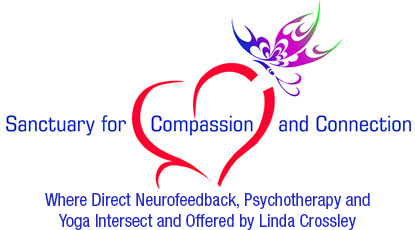Can talking to animals help heal our hearts?
My family and friends laugh when I have a conversation with my two dogs. They tell me that they think it’s funny that I speak for them, putting words in their mouths, in response to what I ask them or tell them. Yes, it may seem funny to others, but I have always known that talking to my animals makes me feel better. And now we are learning that it not only helps us but also makes them happy too!
When I look into the eyes of my dogs, I feel my heart open and I can quickly forget what I was doing, where I was going, or what time it is! I find spending time with my animals, talking to them and petting them makes me happy, even calming and soothing no matter what might be going on in that moment. I know I am not alone in my experience, as I have heard many stories from other people who describe similar responses. So it is no wonder that so many of us own pets, whether dogs, cats, birds, turtles, fish, snakes, pigs, horses, goats, guinea pigs, rabbits, sheep, hamsters, rats, lizards, ferrets, or other species.
However, the health benefits of pet ownership have only more recently been scientifically researched and the results have its critics. The good news is that our laws are not waiting for the research to provide the definitive answer and allow for the designation of ‘emotional support animal’ to be viewed as a ‘reasonable accommodation’ under the Fair Housing Amendments Act of 1988. But you can’t simply say your pet is an emotional support animal and bring it with you everywhere. And, now that animals can be designated as emotional support, I have found that many people are confused between the different names given to animals that provide support or service to us. So what is an emotional support animal, maybe say compared to a service or therapy animal, and what does the current research suggest as to the underlying mechanism to why animals just plain make us humans feel better?
The American Disability Act (ADA) defines what a service animal is and these animals are limited to dogs that are trained to perform specific tasks for someone with either a physical, sensory, psychiatric, intellectual, or other mental disability. Some examples of animals that would fall under this definition include a Guide Dog, Psychiatric Service Dog, and Seizure Response Dog as these dogs have been rigorously trained to perform work directly related to an individual’s disability.
Therapy animals also receive extensive training and are usually found in a clinical setting and are integrated into the plan for treatment to improve a person’s cognitive, emotional, physical, and/or social functioning. Therapy dogs are trained to socialize in various settings, such as hospitals, nursing homes, and schools, and interact with a variety of people, so it is important that their temperament is stable and friendly in these unpredictable environments.
On the other hand, emotional support animals do not fall under the ADA, are not considered service animals, and are not limited to dogs. Some other names you might hear used to describe emotional support animals include comfort animals or companion animals and these animals do not have any special training. I believe it is from the comfort, unconditional affection, and connection that are experienced during the human-animal interaction that has led to the recognition of this designation of animals. In fact, as a therapist, I have had emotional support animals join me in session with clients and I have seen how such a relationship can benefit treatment.
When I think about the role that animals have played in my own life since I was a child, I remember having different pets throughout my life, including dogs, cats, turtles, and fish, and I can think of many fond times that I had with them. And I also can recall times when my animals felt like the only connection I had. When I was stressed out because my parents were fighting again or afraid because I was left alone at night, if I could pet my dog or snuggle with my cat, I was able to tolerate my anxiety and fear better. Just having them close to me brought me comfort, reminding me I wasn’t alone or unloved.
I have also witnessed firsthand the change that can occur in the present moment when my family and friends encounter animals, literally releasing any anger, frustration, and/or sadness they may be experiencing when asked to hold or pet an animal. It seems like the animal is an emotional magnet, drawing the powerful emotions out of the human and allowing them to dissolve into thin air. I even had a friend tell me once that the bonding experience between a human and a pet is the same as the bonding experience between humans and their newborn babies, which got me wondering, could this be true?
I finally looked into the research to see what it might have to say about what exactly it is that draws humans into human-animal encounters and if such a connection has the same potential to help heal broken hearts as the human connection. What I found out is simple yet fascinating, offering much hope to the current fragmented, disconnected state of the world today and it seems my friend might be right!
It seems that human-animal interactions activate the production of oxytocin, which is the human hormone associated with bonding and the increased felt sense of trust, empathy, and loyalty, not only in the human but the animal. So as we connect with our animals, we get a shot of oxytocin, which then supports our ability to navigate and endure social stressors. It has been shown previously that oxytocin is released in humans when we make eye contact with each other and now the research is supporting that the same holds true with our animals. Current research has also shown that petting or any other pleasant tactile interaction with animals causes oxytocin to be released. And, apparently, we get a shot of oxytocin even if we only interact with an animal one time; however, longer-term relationships seem to produce more potent and long-lasting effects.
So, with this new found external validation of my own internal experience, I now make sure I look deeply into my dogs’ eyes when I talk to or pet them, knowing I am bringing more happiness into all of our lives. And I have been telling everyone that will listen to me animals do bring emotional support to our lives, so stop and talk with them to get your daily dose of oxytocin in order to bring a smile to your face and in your heart!
So if you too want to encourage others to talk to animals, click on the link below to read what the research on human-animal interaction has to say!



